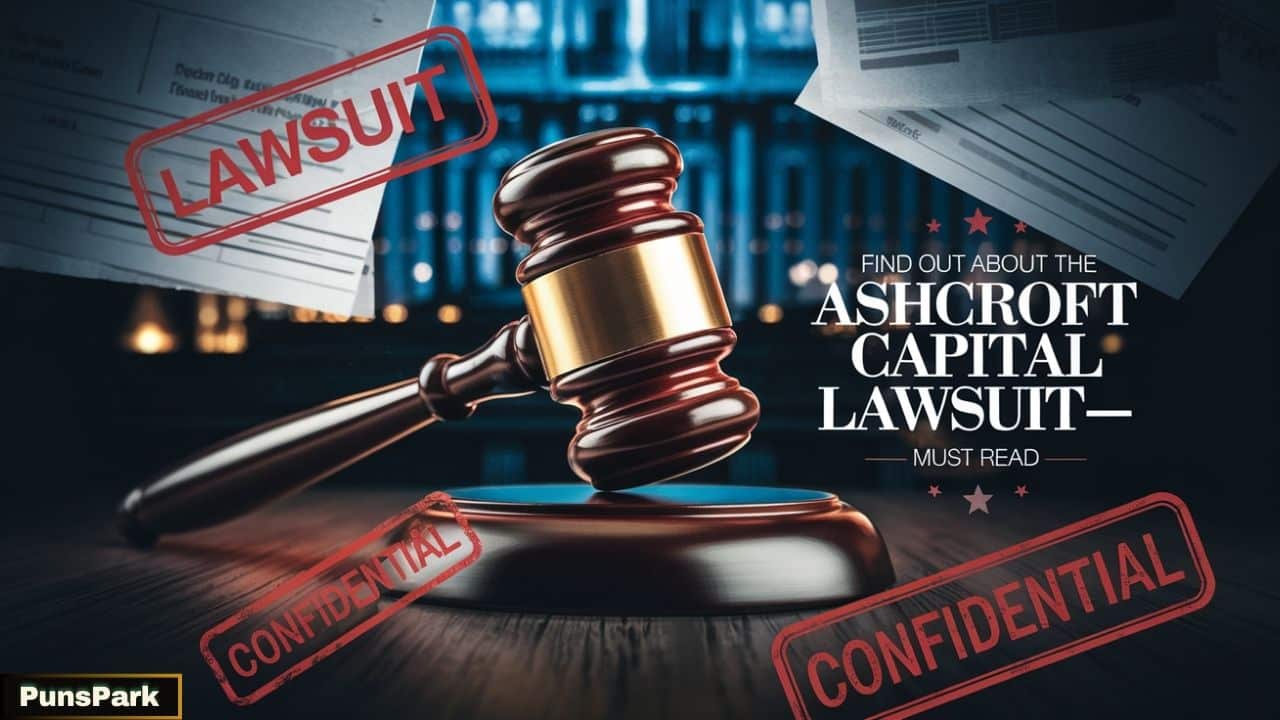Ashcroft Capital Lawsuit: In the high-stakes world of real estate investment, few recent legal battles have sent more shockwaves through the industry than the Ashcroft Capital lawsuit.
This comprehensive analysis breaks down everything you need to understand about this consequential case, its implications for current investors, and the valuable lessons it teaches about due diligence in the multifamily real estate sector.
Why This Case Matters
The Ashcroft Capital lawsuit has become a watershed moment for the real estate market, particularly within the multifamily investment space.
Before this legal battle erupted, Ashcroft Capital had positioned itself as a rising star in the real estate investment world, managing over $1.5 billion in assets across multiple states with a particular focus on value-add multifamily properties.
Founded in 2015 by Joseph Ashcroft, the firm had built its reputation on promising substantial returns through strategic property acquisitions and management.
Their portfolio included over 40 properties across Texas, Florida, and Georgia, with approximately 12,000 units under management.
Many investors were attracted to their claimed average historical returns exceeding 20% annually.
However, beneath this impressive facade lay issues that would eventually erupt into one of the most significant legal challenges in recent real estate investment history.
The lawsuit has exposed critical weaknesses in how some investment management firms operate and raised serious questions about transparency and investor protections.
The Lawsuit’s Origins: More Than Just Allegations
The legal troubles began in earnest in late 2023 when a group of 37 limited partners filed a lawsuit alleging serious financial management improprieties.
The legal action didn’t emerge from a vacuum it followed months of growing investor concerns about financial reporting inconsistencies and unexplained delays in distributions.
Timeline of Critical Events:
| Date | Development |
|---|---|
| January 2023 | First investor complaints about missed distribution targets |
| March 2023 | Internal whistleblower raises concerns about accounting practices |
| June 2023 | Group of investors formally request financial audit |
| August 2023 | Ashcroft Capital denies audit request, citing “proprietary methodology” |
| October 2023 | Initial demand letter sent by investor attorneys |
| December 2023 | Formal lawsuit filed in Southern District of New York |
| February 2024 | Securities and Exchange Commission launches parallel investigation |
| May 2024 | Class action status granted to lawsuit |
The core allegations centered around three main issues:
- Breach of trust regarding the actual use of investor funds
- Deliberate inflation of property values to attract new investment
- Undisclosed conflicts of interest in property management contracts
The plaintiffs’ legal team presented documentation suggesting that as much as $78 million in investor capital had been diverted to unauthorized ventures or entities with connections to Joseph Ashcroft’s personal business interests a serious breach of personal duty to the limited partners.
When the allegations became public, Ashcroft Capital’s response was swift but ultimately unconvincing. In a press statement, the company characterized the lawsuit as “baseless claims from a small minority of investors seeking to extract premature liquidity during a challenging market period.” This defensive stance would soon falter as evidence mounted.
“The patterns revealed in the financial documents suggest systematic misrepresentation of both acquisition costs and operating expenses across multiple properties in the portfolio,” noted financial forensic expert Dr. Miranda Chen, who reviewed the case files.
Key Players Behind the Scenes
The lawsuit has brought several key figures into the spotlight, revealing a complex web of relationships and corporate governance issues that contributed to the current legal morass.
The Plaintiffs: Not Just Disgruntled Investors
Unlike some investment disputes that involve inexperienced investors, the plaintiffs in this case include several sophisticated institutional investors and high-net-worth individuals with extensive real estate market experience.
Lead plaintiff Jonathan Merrick, a former real estate investment banker with over 25 years of experience, has become the public face of the investor group. His involvement lent immediate credibility to the claims.
Other notable plaintiffs include:
- Westlake Investment Partners, a family office managing over $300 million
- Three pension funds with combined assets exceeding $2 billion
- Several real estate professionals who had previously partnered with Ashcroft
What makes their claims particularly compelling is that many had conducted substantial research before investing, following industry-standard due diligence protocols.
Their collective experience undermines Ashcroft Capital’s initial suggestion that the lawsuit stemmed from investor naivety.
Ashcroft Capital Leadership Under Scrutiny
The CEO’s management choices have naturally faced intense scrutiny.
Joseph Ashcroft, who founded the company after a brief but successful career at a major private equity firm, appears to have maintained unusually tight control over the organization’s financial operations.
According to court documents, he personally approved even routine transactions and maintained separate books for different investor groups.
Other key executives implicated include:
- CFO Marcus Dennison, who allegedly implemented the questionable accounting systems
- COO Stephanie Wu, accused of directing property managers to manipulate occupancy data
- Director of Acquisitions Thomas Landon, who allegedly falsified property condition reports
What’s particularly troubling is that several of these executives had undisclosed financial interests in property management companies and renovation contractors hired by Ashcroft Capital creating significant conflicts of interest that were never disclosed to investors.
The Legal Battle Unfolds
As the lawsuit progressed through the court system, several pivotal moments shaped its trajectory and revealed the extent of the alleged misconduct.
Perhaps the most significant turning point came during discovery when plaintiffs’ lawyers obtained internal communications revealing that Ashcroft executives had created two sets of financial projections for properties optimistic versions shown to potential investors and more conservative internal assessments used for actual decision-making.
In one particularly damning email, CFO Dennison wrote to Joseph Ashcroft: “The Columbus property numbers won’t work with realistic renovation costs.
Should we adjust the projected rents upward for the investor deck or reduce the scope of renovations? Investors won’t see the difference until year three anyway.”
The judge’s decision to grant class action status expanded the case dramatically, allowing over 200 additional investors to join.
This increased the potential liability from the initial $78 million to nearly $350 million when accounting for all affected investments.
Expert testimony from real estate appraisers further strengthened the plaintiffs’ case by demonstrating that several properties in the portfolio had been significantly overvalued in investor materials.
For example, a 280-unit apartment complex in Houston was presented to investors with a post-renovation value of $62 million, while independent appraisers valued it at no more than $48 million even with all proposed improvements.
Impact on Investors: Beyond the Balance Sheet
For those with capital tied up in Ashcroft Capital ventures, the lawsuit has created both immediate financial uncertainty and long-term concerns about recovery.
Immediate Financial Effects
The most direct consequence has been the freezing of distributions across all Ashcroft Capital properties even those not specifically named in the lawsuit.
This has created significant hardship for investors who depended on these income streams, particularly smaller investors who may have allocated substantial portions of their portfolios to Ashcroft ventures.
The impact extends beyond just missed distributions.
Investment values have been severely impacted as well:
- Limited partnership interests in Ashcroft funds are now trading on secondary markets at 40-60% discounts to previously stated values
- Refinancing options have been curtailed as lenders have placed Ashcroft-related investments on watch lists
- Several planned property exits have been indefinitely postponed
Protective Measures Taken by Investors
Savvy stakeholders haven’t remained passive during this crisis.
Many have taken proactive steps to protect their interests:
- Forming independent investor committees to assess each property’s actual financial condition
- Hiring third-party property management consultants to evaluate true operational performance
- Exploring legal options for removing Ashcroft Capital as the general partner in specific ventures
- Creating information-sharing networks to coordinate response strategies
“What’s most disturbing isn’t just the alleged fraud but how long it continued before detection. The elaborate reporting structure created the illusion of transparency while actually obscuring critical information,” notes attorney Melissa Jenkins, who represents several affected investors.
Broader Market Ripple Effects
The implications of the Ashcroft Capital lawsuit extend well beyond the immediate parties involved, creating ripples throughout the multifamily real estate investment ecosystem.
Industry-Wide Impact
The case has triggered a wave of investor scrutiny across similar investment vehicles. Limited partners in other real estate syndicates have begun demanding enhanced reporting, independent audits, and greater operational transparency.
This heightened vigilance has already exposed questionable practices at two other midsize investment firms, suggesting the Ashcroft case may be just the tip of the iceberg.
Regulatory attention has also intensified.
The Securities and Exchange Commission has launched a broader investigation into reporting practices across the private real estate investment sector, with a particular focus on how property valuations are communicated to investors.
Industry analysts expect this increased scrutiny to result in new disclosure requirements and potentially stricter accreditation standards for real estate investment opportunities.
Changing Investor Behavior
The lawsuit has fundamentally altered how sophisticated investors approach multifamily real estate opportunities:
- Due diligence periods have lengthened by an average of 30% as investors conduct more thorough investigations
- Demand for independent third-party property inspections has surged
- Investors are increasingly requesting direct contact with property managers rather than relying solely on sponsor reports
- More investors are negotiating for positions on advisory committees with real oversight authority
Settlement Developments and Negotiations
As the case has progressed, settlement talks have become increasingly serious, particularly as the evidence against Ashcroft Capital has mounted.
While no final agreement has been reached as of this writing, several key developments suggest the direction these negotiations are taking.
In April 2024, Ashcroft Capital made its first formal settlement offer, proposing to:
- Return all invested capital to limited partners in properties acquired after 2021
- Transition management of all properties to an independent third party
- Establish a $50 million restitution fund for affected investors
- Implement enhanced financial controls and reporting systems
This initial offer was rejected by the plaintiff committee as inadequate given the scale of the alleged misconduct.
However, ongoing mediation sessions have continued, with the involvement of a court-appointed special master to facilitate negotiations.
The most recent discussions have centered around potential payouts structured over time based on actual property performance, with an independent fiduciary overseeing the process.
This approach would allow for greater eventual recovery for investors while acknowledging the practical limitations of immediate full restitution.
A significant complication in these negotiations is the parallel SEC investigation, which could potentially result in additional penalties and requirements beyond what private litigation might achieve.
This regulatory uncertainty has made both sides more cautious in finalizing any settlement agreement.
Lessons for Due Diligence in Investment
Perhaps the most valuable outcome of this lawsuit is the harsh but necessary education it provides for real estate investors about proper due diligence.
The case has exposed several red flags that, in retrospect, should have alerted investors to potential problems.
Warning Signs That Were Missed
Experienced investors have identified several warning signs that, had they been recognized earlier, might have prevented losses:
- Unusually consistent returns across different markets and property types, defying normal market fluctuations
- Limited access to property-level operating data, with information filtered through multiple reporting layers
- Resistance to direct investor visits to properties or meetings with on-site management
- Frequent changes to reporting formats that made year-over-year comparisons difficult
- Delayed or incomplete responses to specific financial questions
Essential Vetting Strategies
Based on lessons from this case, investment experts recommend several enhanced due diligence practices:
- Verify track record claims independently rather than relying on sponsor-provided summaries
- Request and analyze actual property-level financial statements for at least 3 years prior to acquisition
- Conduct background checks on all key executives, including litigation history and regulatory actions
- Speak directly with property managers about operational challenges and capital needs
- Review all affiliate relationships to identify potential conflicts of interest
- Compare projected performance against actual results for the sponsor’s previous projects
“The Ashcroft case teaches us that sophisticated marketing materials and impressive executive credentials don’t substitute for transparent operations and verifiable results,” emphasizes Dr. Rachel Winters, Professor of Real Estate Finance at Columbia University.
What Happens Next: Looking Forward
The resolution of the Ashcroft Capital lawsuit will likely unfold over several more months, if not years.
However, certain developments can be anticipated based on similar cases and the current trajectory of proceedings.
Most legal experts expect the case to ultimately settle before trial, with a comprehensive agreement that includes:
- Substantial financial compensation to investors, likely exceeding $200 million
- Complete restructuring of Ashcroft Capital’s management and operations
- Independent oversight of all remaining properties until orderly liquidation
- Permanent industry bars for certain executives implicated in the most serious misconduct
For the properties themselves, the most likely outcome is a gradual, orderly disposition rather than fire sales.
The court-appointed receiver currently managing the portfolio has indicated that some properties are performing reasonably well despite the legal turmoil, and rushed sales would only further harm investor recoveries.
For Joseph Ashcroft personally, the consequences extend beyond civil liability. Sources close to the investigation indicate that criminal charges are being considered based on evidence uncovered during discovery.
The potential for personal criminal liability has likely influenced settlement discussions as well.
FAQs
What is the Ashcroft Capital lawsuit about?
The Ashcroft Capital lawsuit revolves around claims of poor financial management and breach of trust. Investors allege that Ashcroft Capital did not provide clear information regarding their investment plans, leading to unexpected losses. There are also accusations of inflated property values, which further fueled concerns about the company’s business practices.
Who is involved in the Ashcroft Capital lawsuit?
The primary parties involved in the Ashcroft Capital lawsuit include the company’s founder and CEO, Joseph Ashcroft, along with investors who claim to have been misled by the company’s practices. Legal teams representing both the company and the investors are also central to the case, working through the complexities of the lawsuit in court.
How has the Ashcroft Capital lawsuit impacted investors?
The Ashcroft Capital lawsuit has left many investors uncertain about their financial future. Investors are concerned about the possibility of losing their investments, especially since there are claims of misleading statements and inflated asset values. The case has also raised questions about the transparency and ethics of investment practices in real estate.
What are the potential outcomes of the Ashcroft Capital lawsuit?
The Ashcroft Capital lawsuit could lead to various outcomes, including a potential payout for affected investors if a settlement is reached. However, no clear resolution has been made yet, and the final decision will depend on the court’s judgment and any agreements made during settlement talks.
How is the Ashcroft Capital lawsuit affecting the real estate market?
The Ashcroft Capital lawsuit has caused ripples in the real estate market, especially among investors and stakeholders. The legal battle has created uncertainty about the future of the company, affecting stock prices and market sentiment. Other companies in the real estate sector are closely watching how this case unfolds, as it could influence industry standards.
What can other investors learn from the Ashcroft Capital lawsuit?
The Ashcroft Capital lawsuit offers valuable lessons about the importance of doing thorough research and ensuring transparency in investment decisions. Investors should be cautious of companies that do not provide clear and honest communication about their business practices, as this case shows how lack of transparency can lead to serious legal and financial consequences.
Conclusion: The New Investment Landscape
The Ashcroft Capital lawsuit represents more than just another financial scandal it marks a fundamental shift in how multifamily real estate investments will be structured, marketed, and monitored going forward.
For current and prospective real estate investors, the case offers several crucial takeaways:
- Transparency must be non-negotiable if sponsors resist providing detailed property-level information, that resistance itself is a red flag
- Integrity in reporting is more important than impressive projected returns
- Independent verification is essential, not optional
- Alignment of interests between sponsors and investors needs to be structural, not just rhetorical
- Even sophisticated investors can be misled without proper safeguards
The real estate investment industry will emerge from this scandal changed, likely for the better.
The increased scrutiny, enhanced due diligence standards, and regulatory attention should ultimately create a healthier ecosystem where ethical operators can thrive and investors can participate with greater confidence.
For those directly affected by the Ashcroft Capital situation, resources are available through the court-appointed receiver’s website, including claim forms, property status updates, and upcoming creditor meeting schedules.
The plaintiff committee has also established an information clearinghouse for affected investors.
The final chapter of this story has yet to be written, but its impact on investment management practices and real estate investor behavior is already profound and likely permanent.
Read more knowledgeable blogs on Puns Park

Philipp Engel is a master of wit and wordplay, dedicated to crafting pun-filled content that brings smiles and laughter to readers. With a knack for turning ordinary phrases into extraordinary humor, Philipp shares clever pun guides to brighten your day and sharpen your sense of humor.







